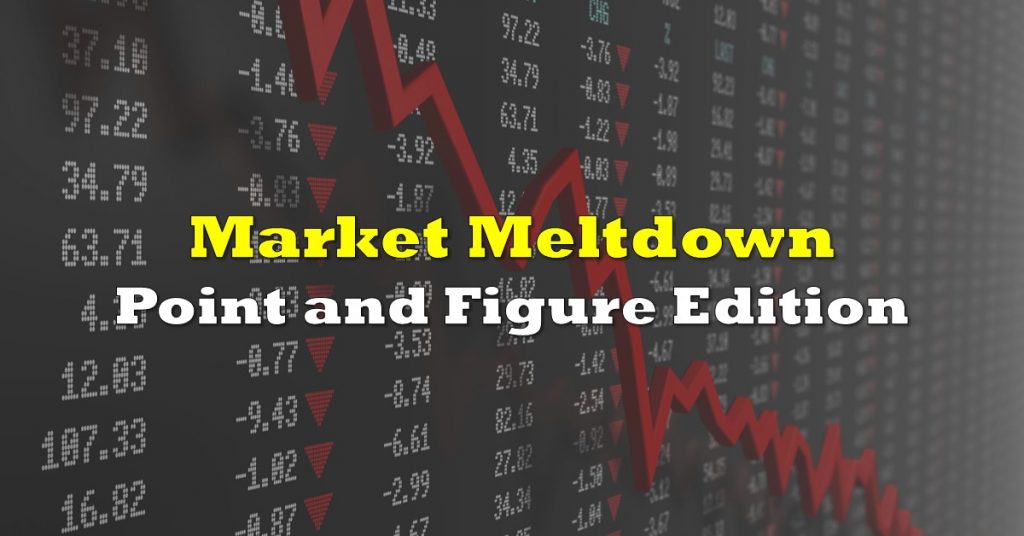Is the reaper finally here, or is this an imposter?
The Bears came out of hibernation in the last week of February, as the major indexes suffered corrections, and technical indicators were looking tepid at best. A sharp sell off on the 26th – the last Friday of February – means that more than a few asset managers went to cash and is the sort of thing that often precedes violent corrections. After an exceptionally long winter, the bears were eyeing these equities markets up with a well-earned hunger.

The broader markets showed a strong recovery Monday, but not before the short-side sharps, whose game revolves around betting on the market to catch up to fundamental weaknesses of companies, started to have things work out for them for a change.
Confidence/being right footed is such a magical fucking elixir. If I could choose this or the vaccine for the entire rest of the year, I might choose this.
— Midwestern Hedgie (@MidwestHedgie) February 26, 2021
It won’t be anywhere near enough of a feed for these apex predators and opportunistic scavengers, who have likely burned through any fat that they might have stored up, and are now on a well-deserved hunt that involves no kind of stealth.
The proverbial scent of blood that wafted through the capital markets meadow to put these bears on the hunt last week was a surge in bond yields. At close of business Friday, the yield on the benchmark 10 year US Treasury note stood at a “whopping,” 1.44%. Germany’s 10 year bund was UP to yield -0.21%, and that isn’t a typo: in Germany bonds are called “bunds.”
Bundholders who purchased a bund last week and hold it until maturity will lose 0.21% for the privilege of stability; an effective guarantee they won’t lose the principle. The ultra low yields (on a historic basis) are what sent these bears into hibernation in the first place, and kicked off the all-time-face-ripper of a bull run in equities that we have been on for the past year. An upward move in yields, the theory goes, will entice money out of the equities markets, where return comes with considerably more risk, and a general feeling that bond yields are an acceptable return would be blood in the streets for the stock market because, as big as it is, the bond market is much, much bigger.

Statistia counts the total value of global equities in 2020 at $32.47 trillion.
That’s about one quarter the size of the $128.3 trillion global bond market.

Much of the money parked in bonds, as we mentioned, is there to not be lost. It belongs to families of aristocrats rich enough to keep themselves out of the press, and money pools like pension funds and insurance reserves of all sizes (but mostly large sizes) who have cash reserves that absolutely, positively, can not be exposed to any risk.
Ideally, the return on that money would be enough to pay for whatever expenses the family or business generates administering the money and generate some growth. When it doesn’t, portions of the money are exposed to more risk in an effort to generate a return.
The next stage of risk on the ladder is the orange slice of the pie depicted above: corporate bonds that carry slightly more risk than government bonds, and whose yield, in this low-yield environment, is also not all that much. When the yields get low enough that enough of that money is willing to take a risk in the equities market, there’s an argument to be made (often by bears) that the markets end up working too well.

Definition: Bond Yields.
There are two components to yield: rate and price. The rate is the interest paid on the note, and the price is the last price it changed hands at. The difference between the last price and the total principle and interest that the bond will pay out (annualized) is the yield.
The first price of a treasury note is set when it’s sold by the US Treasury to its first owner. Every time it changes hands on the secondary market, it sets a new price. When there are more sellers of bonds than buyers of bonds, the price goes down, and the yield goes up. As yields go up, bonds start to look more attractive to investors, relative to their risk, and stand to cause a rotation out of equities and in to bonds.

While the price of bonds is determined by the fickle gods of the markets, the rates of new bonds are determined by their issuers. The benchmark US Treasury note is sold by the Federal Reserve of the United States. It is the benchmark because it is the largest issuer in its risk class. When the Fed moves the rate of its notes, other issuers all adjust their rates to match the move and price their new notes relative to demand, and the yields of bonds move accordingly.
Analysts are always taking a microscope to the language of the minutes of Fed meetings, because they’re looking for clues about what the bank might do. If the Fed even thinks of moving rates, it’s sure to effect all of the markets all at once, and the Fed knows it. The Fed and its central bank peers have been very clear that they aren’t raising rates, and are known to actively control the yield curve by buying bonds out of the secondary market to keep the yield from getting out of hand. That could well have been what put a lid on the yield spike Monday March 1st, pushing the major markets back into the green, but didn’t make these bears any less hungry.
Orthodox bears decry Central Bank interference in the natural order of markets, which is noble, but does anyone have a right to be surprised?
It’s all relative
The grand exit from equities is bound to happen eventually, but bond yields as an indicator are only part of the equation. Slightly higher yields are only enticing enough to draw investors out of the equities markets when the risk-adjusted return in equities is lower than the yield of the bond market. A yield move on its own could make that happen, but in a market where SPACs that list at $10 are selling for $40 before they even announce a deal, it’s going to have to move to a yield a lot juicier than 1.42%.

Information for this briefing was found via Sedar and the companies mentioned. The author has no securities or affiliations related to this organization. Not a recommendation to buy or sell. Always do additional research and consult a professional before purchasing a security. The author holds no licenses.









